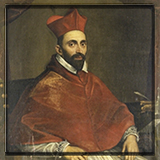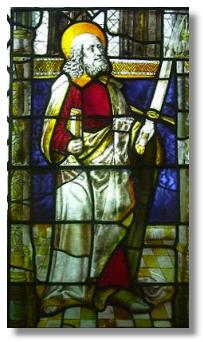 |
L'Eglise Aristotelicienne Romaine The Roman and Aristotelic Church
Forum RP de l'Eglise Aristotelicienne du jeu en ligne RR
Forum RP for the Aristotelic Church of the RK online game
 
|
| Voir le sujet précédent :: Voir le sujet suivant |
| Auteur |
Message |
Gianvitus

Inscrit le: 13 Jan 2013
Messages: 1351
|
 Posté le: Ven Mai 17, 2019 9:13 pm Sujet du message: [EN-Dogma]Saint Mungo Posté le: Ven Mai 17, 2019 9:13 pm Sujet du message: [EN-Dogma]Saint Mungo |
 |
|
| Citation: | Hagiography of Saint Mungo – Saint of Scotland and Glasgow

Here is the bird that never flew
Here is the tree that never grew
Here is the bell that never rang
Here is the fish that never swam
Birth of a Beloved
Saint Mungo, the Beloved, also known as Kentigern which is used by the English, was born around 525 on the riverbank of River Forth, near the small village of Culcross. His mother Tenneu was a princess, daughter of King Lleuddun , who ruled Lothian and was infamous for his fury. Saint Mungo was conceived as the fruit of love of Princess Tenneu and King Owain. However, King Owain was married to another woman at that time and Princess Tenneu was accused of seducing Owain, leading him into sin. Her father Lleuddun, a man of wroth, denounced Tenneu and threw her from the heights of Traprain Law. Through a miracle, she and her unborn child survived the fall and escaped via the River Forth in a coracle. After a day of drifting downstream on the river, Tenneu found her way to the riverbank and discovered an abandoned campfire. There, in the warmth and safety of the fire, she gave birth to Kentigern, meaning 'Big chief' in Tenneu's native tongue. A local farmer, who found mother and child the next day, quickly brought the priest from the nearby village of Culcross, who rushed to give his aid to the mother and the newborn child. As he saw the young boy, he gently took him in his arms. "Mynn cu," he said, "my beloved.” And this nickname slowly changed to Mungo, which he adopted as his own name.
Youth and first Miracle
Saint Mungo was raised in an Aristotelian manner from his mother, who was well-versed in the Dogma and the Holy Scriptures. However, Saint Mungo also learned the old Celtic traditions and the respect for nature. During long walks, he became familiar with all local flora and fauna. One day, a group of robins were pecking on the ground of the village, looking for scraps. Some of his classmates, being young and brazen, began throwing rocks at the birds. One bird was hit by the stones and fell to the ground. The boys ran from the scene. Saint Mungo ran as well, but rather then running away, he ran towards the hit bird. He took the bird in his hands and prayed over it. After a little while, the bird was revived and it flew away as if nothing had happened. The villagers who witnessed the event called it a miracle that the young rushed to the bird's aid and was able to revive it. And thus, Saint Mungo performed his first miracle.
”Ariston's monastery” and the second Miracle
He was educated and trained as a priest of the Ancient Church at the monastery of Ariston at Culross, Fife. His mother's teachings and his childhood experience assured him to follow the path of virtue and he maintained a desire to strengthen his Aristotelian belief. He joined as a disciple and was introduced to the daily routines within the monastery. One winter night, it was the duty of the future Saint to watch over the fire. The fire was the only source of heat and crucial to all who lived inside the monastery. He fell asleep and the precious fire was lost to the cold wind. Even the last sparkle of burning ash was gone. When St. Mungo woke he realized the misery he had created with his negligence and took a thick, ice covered branch and placed it on the fireplace. Some of the monks were already awake and witnessed this miracle. St. Mungo prayed to god.
In deep desperation,
Never more aware of imperfection of myself
Cold by failing my tasks
Everyone counting on me, I disappointed
Not for me, I ask your love.
Deliver them your love, warm them as they are your children
Inflame their hearts and keep them safe
Oh Most High
Called to Rome and Return to Scotland
The time in Ariston's ended and he was ordained as priest. To deepen his faith, he went to Rome and was received by the pope of that time. He proved himself as a cleric worthy to take up the mission to bring the good faith to the people of Scotland. To be able to call the faithfuls to the mass. As it was common at that time, he received a handbell by the pope himself. Returning to Scotland, he was sent to a holy man called Fergus at Kernach. Fergus died the night he arrived and Mungo placed his body on a cart yoked by two wild bulls commanding them to convey it to the place ordained by the Lord. They stopped at Cathures where Fergus was buried and Mungo established a church. Mungo referred to this spot as 'Glasgu' or the beloved green place. This became Glasgow and the church developed into Glasgow Cathedral.
The fish that never swim
'Here's the Fish that never swam' - the fish with a ring in its mouth is a salmon and the ring was a present from Hydderch Hael, King of Cadzow, to his Queen, Languoreth. The Queen gave the ring to a knight to protect it with his life and keep it safe and the King, suspecting an intrigue, took it from him while he slept during a hunting party and threw it into the River Clyde. On returning home the King demanded the ring and threatened Languoreth with death if she could not produce it. The Queen appealed to the knight who, of course, could not help and then confessed to St. Mungo who sent one of his monks to fish in the river, instructing him to bring back the first fish caught. This was done and St Mungo extracted the ring from its mouth. The Queens reputation was restored and the King needed to beg pardon.
Death and influence of the Saint
Mungo lived an ascetic and holy life until his death in 603.
Until today he remains the most influential cleric for the city of Glasgow as all his miracles are still to be found within the Coat of Arms of the city of Glasgow. His body has been buried within the crypt of the cathedral of Glasgow.
Relics and Feast
Feast Day: 13th of January
Relics: His remains within the crypt of the Cathedral of Glasgow, The bell which is displayed in a shrine in the Cathedral. |
 |
|
| Revenir en haut de page |
|
 |
|
|
Vous ne pouvez pas poster de nouveaux sujets dans ce forum
Vous ne pouvez pas répondre aux sujets dans ce forum
Vous ne pouvez pas éditer vos messages dans ce forum
Vous ne pouvez pas supprimer vos messages dans ce forum
Vous ne pouvez pas voter dans les sondages de ce forum
|
|






